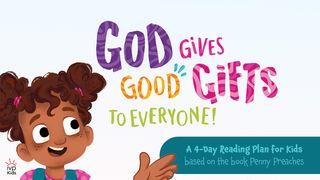Belmont University Advent GuideSample

The meeting of Mary and Elizabeth celebrates the joyful coming of a God, whose holy and life-giving Spirit brings life into those places of our lives where renewal, joy, and hope lay beyond the pale of what was humanly imaginable.
The virgin Mary—a life and body too young and vulnerable to bear the life of another. The barren Elizabeth—a life and body too worn and exhausted for new life. Empty and devoid of the hope of life, their life and bodies are sacraments of the wilderness, for what hope of life can come out of the wilderness. There is between them the further matter of grace, or rather disgrace. In a culture that honored the life and body of women who bore life, Mary and Elizabeth stand together at the far margins of disgrace.
A life without hope of grace or joy is not the life that God has chosen for these women. It is not the life that God has chosen for any of His children, for any who stand joyless at the margins of cultural disgrace, for any who fear that they are too vulnerable, too weak to hope in the strength of their own bodies—the widow, the orphan, the immigrant, the sick—the most vulnerable in our society. Who might these be for us today? Pause a moment and begin to think.
The Spirit of God enters the lives and bodies of these women, for whom the frailty, prejudice, and indifference of the human community shut out joy and hope and life. The Spirit is the Power of Life, the Power that gives life, life where there should be no life, joy where only sorrow was imaginable, hope where despair had long been a constant companion.
The Spirit transforms the desolate wombs of these women, empowering them to become vessels of divine Life, for it is not simply babies that inhabit these wombs. It is John, the Voice of one crying in the wilderness. It is Jesus, the flesh of the Lord God Himself. The joy of Mary and Elizabeth invites us to experience how God can use the frailty of our life and flesh to bring His unfathomable Life and Power into the world. May the meeting of these two women, so full of life and hope, become an icon of the communal joy and life that salvation offers us this Advent season.
Manuel A. Cruz
Assistant Professor of Theology
The virgin Mary—a life and body too young and vulnerable to bear the life of another. The barren Elizabeth—a life and body too worn and exhausted for new life. Empty and devoid of the hope of life, their life and bodies are sacraments of the wilderness, for what hope of life can come out of the wilderness. There is between them the further matter of grace, or rather disgrace. In a culture that honored the life and body of women who bore life, Mary and Elizabeth stand together at the far margins of disgrace.
A life without hope of grace or joy is not the life that God has chosen for these women. It is not the life that God has chosen for any of His children, for any who stand joyless at the margins of cultural disgrace, for any who fear that they are too vulnerable, too weak to hope in the strength of their own bodies—the widow, the orphan, the immigrant, the sick—the most vulnerable in our society. Who might these be for us today? Pause a moment and begin to think.
The Spirit of God enters the lives and bodies of these women, for whom the frailty, prejudice, and indifference of the human community shut out joy and hope and life. The Spirit is the Power of Life, the Power that gives life, life where there should be no life, joy where only sorrow was imaginable, hope where despair had long been a constant companion.
The Spirit transforms the desolate wombs of these women, empowering them to become vessels of divine Life, for it is not simply babies that inhabit these wombs. It is John, the Voice of one crying in the wilderness. It is Jesus, the flesh of the Lord God Himself. The joy of Mary and Elizabeth invites us to experience how God can use the frailty of our life and flesh to bring His unfathomable Life and Power into the world. May the meeting of these two women, so full of life and hope, become an icon of the communal joy and life that salvation offers us this Advent season.
Manuel A. Cruz
Assistant Professor of Theology
About this Plan

This Advent Guide comes from students, faculty, and staff at Belmont University. Advent is that season of waiting that carefully and purposefully helps us to realign our priorities and to glimpse, anew, our place before God. Our humble hope is this guide helps people focus more fully on Jesus Christ through the Advent season.
More
We would like to thank the students, faculty, and staff of Belmont University for providing this plan. For more information, please visit: www.belmont.edu
Related Plans

Acts Reading Plan

God Gives Good Gifts to Everyone

The Last Half Hour: When Waiting Becomes Glory

Pawprints & Prayers: Devotions for Dog Lovers

When God Says No!

See God’s Peace: 3 Days of Visio Divina

Dog Dad Devotions on Leadership, Loyalty and Love

A Brighter Future: A 5-Day Devotional

Living With a Strong-Willed Child
